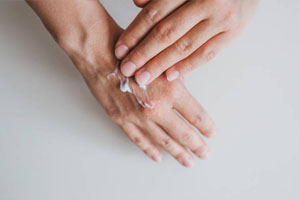Discover the perfect timing for applying beauty face masks to maximize their effectiveness Learn when and how to use these masks to achieve your skincare goals and maintain a radiant complexion Get expert tips in our comprehensive guide
Beauty face masks have become an integral part of skincare routines, offering a range of benefits to address various skin concerns. Whether your goal is to hydrate, brighten, soothe, exfoliate, or purify your skin, choosing the right time to use these masks can significantly impact their effectiveness. Timing can make a difference in how your skin responds and reaps the maximum benefits.
In this guide, we'll explore the optimal times for applying beauty face masks, taking into account your skincare goals, skin type, and daily routine. By understanding the best timing, you can enhance the results of your skincare regimen and achieve the radiant and healthy complexion you desire.

The Purpose of Face Masks
Beauty face masks are a popular skincare product designed to address various skin concerns. They can hydrate, brighten, soothe, exfoliate, or purify the skin. Before determining the best time to use them, it's crucial to understand their purpose and benefits.
Morning vs. Evening: When to Apply Face Masks
When you should use a beauty face mask depends on your skincare goals and the type of mask you're using.
Evening Masks for Repair and Hydration
Evening is an ideal time for masks that focus on repair and deep hydration. Nighttime masks can help replenish moisture, repair the skin barrier, and prepare your skin for a new day. Look for masks with ingredients like hyaluronic acid, ceramides, or nourishing oils for overnight use.
Morning Masks for a Refreshing Start
Morning masks are great for giving your skin a refreshing start. They can help wake up your complexion, reduce puffiness, and create a smooth canvas for makeup application. Opt for masks with ingredients like caffeine, antioxidants, or fruit extracts for a morning boost.
Consider Your Skin Type and Concerns
The best time to use a face mask also depends on your skin type and specific concerns.
Oily or Acne-Prone Skin
If you have oily or acne-prone skin, using a purifying or clay mask in the evening can help control excess oil and clear pores. These masks are effective at preventing breakouts and should be used 2-3 times a week.
Dry or Sensitive Skin
Individuals with dry or sensitive skin should opt for hydrating or soothing masks in the evening. These masks provide much-needed moisture and can calm redness and irritation. Using them 1-2 times a week is typically sufficient.
Combination Skin
If you have combination skin with both oily and dry areas, consider using different masks on different days. Apply purifying masks to the oily zones and hydrating masks to the dry areas.
Hydration and Moisturization Masks
Hydration masks are excellent for replenishing moisture and can be used 2-3 times a week. Apply them in the evening to allow your skin to soak in the hydration while you sleep.
Exfoliating and Clarifying Masks
Exfoliating masks should be used less frequently, about once a week. They are best applied in the evening to remove dead skin cells and promote skin renewal.
Avoiding Overuse and Common Mistakes
Overusing face masks, regardless of the type, can lead to skin sensitivity and irritation. It's important to follow the recommended usage instructions and pay attention to your skin's response. Always cleanse your face before applying a mask and avoid using multiple masks on the same day, especially if they contain potent ingredients like acids or retinol.
Understanding your skin's needs and the purpose of the mask will guide you in selecting the best time to use beauty face masks for optimal results.
Understanding the Purpose of Face Masks
Hydration Masks for Moisture Boost
Hydration masks are specifically formulated to replenish the skin's moisture levels. They are ideal for individuals with dry, dehydrated skin. These masks often contain ingredients like hyaluronic acid, a powerful humectant that attracts and retains moisture, ensuring your skin feels plump and well-hydrated.
Brightening Masks for a Radiant Complexion
Brightening masks aim to reduce dullness and uneven skin tone. They often contain ingredients like vitamin C, which has antioxidant properties that can fade dark spots and enhance overall radiance. These masks are perfect for those looking to achieve a more vibrant complexion.
Soothing Masks for Irritated Skin
Soothing masks are designed to calm and comfort sensitive or irritated skin. They typically feature ingredients like aloe vera, chamomile, or colloidal oatmeal, known for their anti-inflammatory properties. If your skin is prone to redness or discomfort, soothing masks can help provide relief.
Exfoliating Masks for Skin Renewal
Exfoliating masks are focused on removing dead skin cells and promoting skin renewal. They often contain ingredients like alpha hydroxy acids (AHAs) or beta hydroxy acids (BHAs), which can unclog pores and improve skin texture. These masks are great for achieving a smoother, more refined complexion.
Purifying Masks for Clearer Skin
Purifying masks are beneficial for those with oily or acne-prone skin. They usually feature ingredients like clay or charcoal, which help absorb excess oil and impurities from the skin, reducing the risk of breakouts. These masks are effective at deep-cleansing and maintaining clear, blemish-free skin.
Anti-Aging Masks for Youthful Skin
Anti-aging masks target signs of aging, such as fine lines and wrinkles. They often contain ingredients like retinol, peptides, and antioxidants to stimulate collagen production and protect the skin from free radical damage. These masks can help you maintain a more youthful complexion and reduce visible signs of aging.
Each type of face mask serves a distinct purpose, so understanding your skin's needs and concerns is essential in selecting the right mask for your skincare routine. Whether you're looking for hydration, radiance, soothing relief, skin renewal, clarity, or anti-aging benefits, there's a face mask tailored to meet your specific goals.
Morning vs. Evening: When to Apply Face Masks
Evening Masks for Repair and Hydration
Evening is an optimal time for applying face masks that focus on repair and deep hydration. Nighttime masks can help your skin recover from daily environmental stressors and replenish moisture while you sleep. Consider using evening masks if you want to:
- Repair the Skin Barrier: Evening masks with ingredients like ceramides and niacinamide can fortify your skin's protective barrier, preventing moisture loss and maintaining a healthy complexion.
- Boost Hydration: Ingredients like hyaluronic acid, glycerin, or natural oils work effectively during sleep to hydrate and rejuvenate your skin, making it look plump and refreshed in the morning.
- Fade Dark Spots: Masks containing skin-brightening ingredients can help in reducing the appearance of dark spots and hyperpigmentation, as your skin undergoes the repair process overnight.
Morning Masks for a Refreshing Start
Morning face masks can give your skin a refreshing start and prepare it for the day ahead. These masks help in waking up your complexion, reducing puffiness, and creating a smooth canvas for makeup application. Consider using morning masks if you want to:
- Reduce Puffiness: Morning masks that contain ingredients like caffeine or cooling agents can help decrease puffiness and awaken your skin.
- Prime for Makeup: Masks with a lightweight, non-greasy texture can serve as an excellent base for makeup, allowing it to glide on smoothly and last longer.
- Boost Radiance: Morning masks can also include ingredients like antioxidants or fruit extracts that provide an instant radiance boost, making your skin look more vibrant and energized.
Ultimately, the choice between morning and evening application depends on your skincare goals and the type of mask you're using. A well-thought-out skincare routine that considers both the morning and evening can help you achieve the best results for your skin.
Consider Your Skin Type and Concerns
Oily or Acne-Prone Skin
If you have oily or acne-prone skin, it's important to choose face masks that are tailored to address your specific concerns. Consider the following:
- Purifying Masks: Look for masks that contain ingredients like charcoal, clay, or salicylic acid to absorb excess oil and unclog pores. Using purifying masks 2-3 times a week in the evening can help prevent breakouts.
- Oil-Free Formulas: Opt for oil-free or non-comedogenic masks to avoid exacerbating oiliness. These masks won't clog pores, helping to maintain clear and balanced skin.
Dry or Sensitive Skin
If you have dry or sensitive skin, you should focus on masks that provide hydration and soothing relief:
- Hydrating Masks: Choose masks enriched with ingredients like hyaluronic acid or glycerin to quench your skin's thirst. Using these masks 1-2 times a week in the evening can help combat dryness and discomfort.
- Soothing Masks: Masks with aloe vera, chamomile, or colloidal oatmeal can help calm redness and irritation. They are suitable for sensitive skin and should be used as needed when your skin needs relief.
Combination Skin
If you have combination skin with both oily and dry areas, a balanced approach is key:
- Zonal Application: Apply purifying masks to the oily areas, typically the T-zone, in the evening. Use hydrating or soothing masks on dry areas. This targeted approach ensures that each part of your face receives the care it needs.
Adapting your mask choice to your skin type and specific concerns is essential in achieving the best results and maintaining a balanced, healthy complexion. The key is to address your skin's unique needs and challenges with the right face mask regimen.
Hydration and Moisturization Masks
Choosing the Right Hydration Mask
Hydration masks are designed to boost moisture levels in the skin, making them an excellent choice for individuals with dry or dehydrated skin. To get the most out of these masks, consider the following:
- Hydrophilic Ingredients: Look for masks that contain hydrophilic ingredients like hyaluronic acid, glycerin, or ceramides. These ingredients attract and retain moisture, leaving your skin plump and well-hydrated.
- Rich Textures: Masks with rich, creamy textures are often more hydrating. These can be left on the skin for a longer time to ensure deep hydration.
- Fragrance-Free: If you have sensitive skin, opt for fragrance-free hydration masks to reduce the risk of irritation.
When and How to Use Hydration Masks
For optimal results, apply hydration masks 2-3 times a week in the evening. Evening application allows your skin to absorb the moisture while you sleep, waking up with a refreshed complexion. Follow these steps:
- Cleanse: Start with a gentle cleanser to remove any makeup, dirt, or impurities from your skin.
- Apply: Evenly apply the hydration mask to your face, avoiding the eye area. You can use a brush or your fingers for this step.
- Leave On: Leave the mask on for the recommended duration, typically 15-20 minutes. Some masks can be left on overnight for intense hydration.
- Rinse or Pat Dry: After the specified time, rinse off the mask with lukewarm water or, if it's an overnight mask, gently pat your skin dry with a clean towel.
- Follow with a Moisturizer: Finish your skincare routine with a suitable moisturizer to lock in the hydration and provide extra nourishment.
The Benefits of Hydration Masks
Hydration masks offer several advantages, including:
- Increased Moisture: These masks help combat dryness and dehydration, leaving your skin soft and supple.
- Plump and Radiant Skin: Improved hydration can make your skin appear plumper and more radiant.
- Enhanced Absorption: The hydrated skin is more receptive to other skincare products, enhancing the overall effectiveness of your routine.
Integrating hydration masks into your skincare routine can make a significant difference in achieving well-moisturized and healthy skin. Be consistent in your application, and your skin will thank you with a radiant and hydrated glow.
Exfoliating and Clarifying Masks
Choosing the Right Exfoliating Mask
Exfoliating masks are formulated to remove dead skin cells, unclog pores, and promote skin renewal. To select the best one for your needs, consider the following:
- Active Ingredients: Look for masks containing alpha hydroxy acids (AHAs) or beta hydroxy acids (BHAs) like glycolic acid, lactic acid, or salicylic acid. These ingredients are effective exfoliants.
- Frequency: Exfoliating masks are potent, so they should typically be used once a week. Avoid overusing them, as it can lead to skin sensitivity.
- Suitable for Your Skin Type: Ensure the mask is suitable for your skin type. Some exfoliating masks are gentle enough for sensitive skin, while others are more robust for oilier skin types.
When and How to Use Exfoliating Masks
For effective results, apply exfoliating masks once a week, usually in the evening, to allow your skin to regenerate overnight. Here's how to use them:
- Cleanse: Begin by cleansing your face to remove any makeup, dirt, and impurities.
- Apply: Gently apply the exfoliating mask to your face, avoiding the eye area. Follow the recommended time frame for leaving it on, usually 10-15 minutes.
- Rinse Off: After the designated time, rinse off the mask with lukewarm water, ensuring all product is removed.
- Moisturize: Finish with a moisturizer to keep your skin hydrated and protected after exfoliation.
The Benefits of Exfoliating Masks
Exfoliating masks offer several advantages for your skin:
- Smoother Texture: These masks help to remove dead skin cells, revealing a smoother skin texture and a more even complexion.
- Unclogged Pores: Exfoliation can help prevent clogged pores and reduce the likelihood of breakouts.
- Enhanced Skin Renewal: Regular use of exfoliating masks can stimulate skin renewal, leading to a fresher and healthier appearance.
It's crucial to use exfoliating masks as directed to avoid over-exfoliation, which can result in skin irritation. By incorporating them into your skincare routine, you can enjoy the benefits of clearer, more refined skin.
Avoiding Overuse and Common Mistakes
Preventing Overuse of Face Masks
Using face masks is a great addition to your skincare routine, but it's essential to avoid overusing them to prevent potential issues:
- Follow Usage Instructions: Always adhere to the recommended frequency and duration of use provided on the mask's packaging or in the product instructions. Overuse can lead to skin sensitivity and irritation.
- Moderation is Key: Using multiple masks on the same day, especially those with potent ingredients like acids or retinol, can overwhelm your skin. Stick to one mask per session to avoid overwhelming your skin's barrier.
Common Mistakes to Avoid
When using face masks, certain common mistakes should be avoided to maximize their effectiveness and minimize any negative impact on your skin:
- Not Cleansing Beforehand: Failing to cleanse your face before applying a mask can hinder the product's absorption and effectiveness. Make sure your skin is clean and free of makeup and impurities.
- Leaving Masks On Too Long: Overextending the recommended time can lead to skin irritation. Always follow the mask's instructions for the best results.
- Applying the Wrong Type of Mask: Using a mask that doesn't match your skin type or concerns can lead to suboptimal results. Choose masks that align with your specific needs.
- Skipping Moisturizer: After using a mask, it's crucial to follow up with a moisturizer to lock in hydration and nourishment. Skipping this step can lead to dryness and discomfort.
Listening to Your Skin
One of the most important aspects of using face masks is listening to your skin's needs:
- Pay Attention to Sensations: If you experience any discomfort, burning, or redness while using a mask, remove it immediately and rinse your face. Your skin may be sensitive to the product, and it's best to discontinue use.
- Adjust Based on Season: Your skin's needs may change with the seasons. You might require more hydration in the winter and lighter formulas in the summer. Adjust your mask choices accordingly.
By avoiding overuse, steering clear of common mistakes, and tuning in to your skin's signals, you can harness the full benefits of face masks while maintaining a healthy and radiant complexion.
Frequently Asked Questions
Q1: How often should I use face masks?
A: The frequency of face mask use depends on the type of mask and your skin's specific needs. Hydration masks can typically be used 2-3 times a week, while exfoliating masks should be limited to once a week to prevent over-exfoliation. Always follow the recommended usage instructions provided on the product.
Q2: Can I use different masks on the same day?
A: It's generally not advisable to use multiple masks on the same day, especially if they contain potent ingredients like acids or retinol. Using one mask per session is recommended to avoid overwhelming your skin and maintain its natural balance.
Q3: What should I do if I experience discomfort while using a face mask?
A: If you experience any discomfort, such as burning or redness, while using a face mask, it's best to remove it immediately and rinse your face. Your skin may be sensitive to the product, so discontinue its use. Always perform a patch test when trying a new mask, especially if you have sensitive skin.
Q4: Is it essential to follow up with a moisturizer after using a mask?
A: Yes, following up with a moisturizer is crucial after using a face mask. This step helps lock in the hydration and provide additional nourishment for your skin. Skipping the moisturizer can lead to dryness and discomfort.
Q5: What if I have combination skin with both oily and dry areas?
A: If you have combination skin, you can use different masks on different days. Apply purifying masks to the oily areas, typically the T-zone, in the evening. Use hydrating or soothing masks on the dry areas. This targeted approach ensures that each part of your face receives the care it needs.








